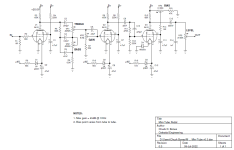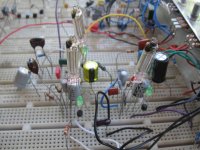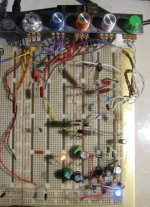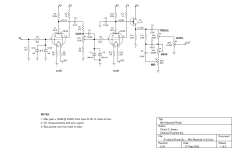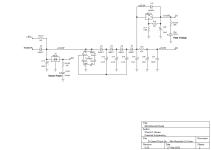Chuck D. Bones
Circuit Wizard
About a week ago, Billy sent me the schematic for the Freeverb, a spring reverb circuit that uses a pair of 6418 vacuum tubes for some of the amplification. I was intrigued and the next day I ordered some up on eBay. The 6418 was designed to be small and very low power. The filament power is only 12.5mW. These babies don't glow or even get warm. They also work with low plate voltage.
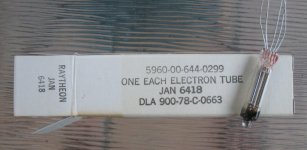
Anyway, I ginned-up this little circuit to see what's what. Total gain is about 48dB. The transistor buffer is there to keep the LEVEL control from loading V2. It works fine without Q1, the gain is just 6dB lower. The 6418 is a directly-heated tetrode. There are a pair of deflector plates connected to the filament that steer the electron flow toward the anode (plate) on pin 1. This circuit makes a fair amount of clean boost before the 2nd harmonic starts to show up. Max clean output is 5Vp-p. Max output is 20Vp-p with a +25V plate supply. Eventually, I'll power this with a charge-pump. For now, I'm using a bench supply for the +25V rail. I use +9V to power the filaments thru R6, R7 and the LEDs. The green LEDs are mainly there to indicate that filament current is flowing. I also built a version where V2 was triode-connected. The total gain was 38dB.
It's still early days, but I wanted to share what I have so far.
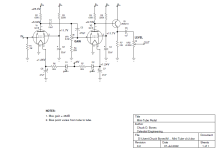
V2 on the left, V1 on the right.
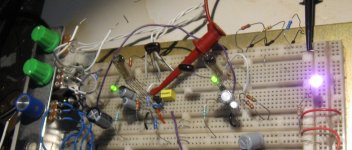

Anyway, I ginned-up this little circuit to see what's what. Total gain is about 48dB. The transistor buffer is there to keep the LEVEL control from loading V2. It works fine without Q1, the gain is just 6dB lower. The 6418 is a directly-heated tetrode. There are a pair of deflector plates connected to the filament that steer the electron flow toward the anode (plate) on pin 1. This circuit makes a fair amount of clean boost before the 2nd harmonic starts to show up. Max clean output is 5Vp-p. Max output is 20Vp-p with a +25V plate supply. Eventually, I'll power this with a charge-pump. For now, I'm using a bench supply for the +25V rail. I use +9V to power the filaments thru R6, R7 and the LEDs. The green LEDs are mainly there to indicate that filament current is flowing. I also built a version where V2 was triode-connected. The total gain was 38dB.
It's still early days, but I wanted to share what I have so far.

V2 on the left, V1 on the right.

Last edited:


